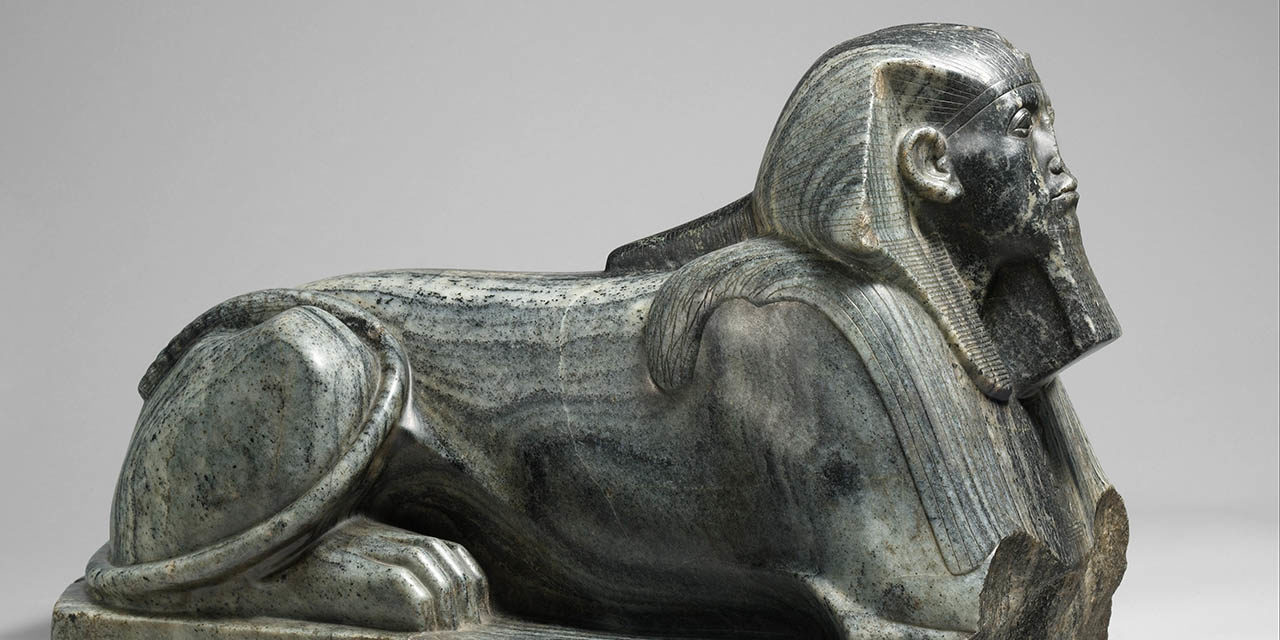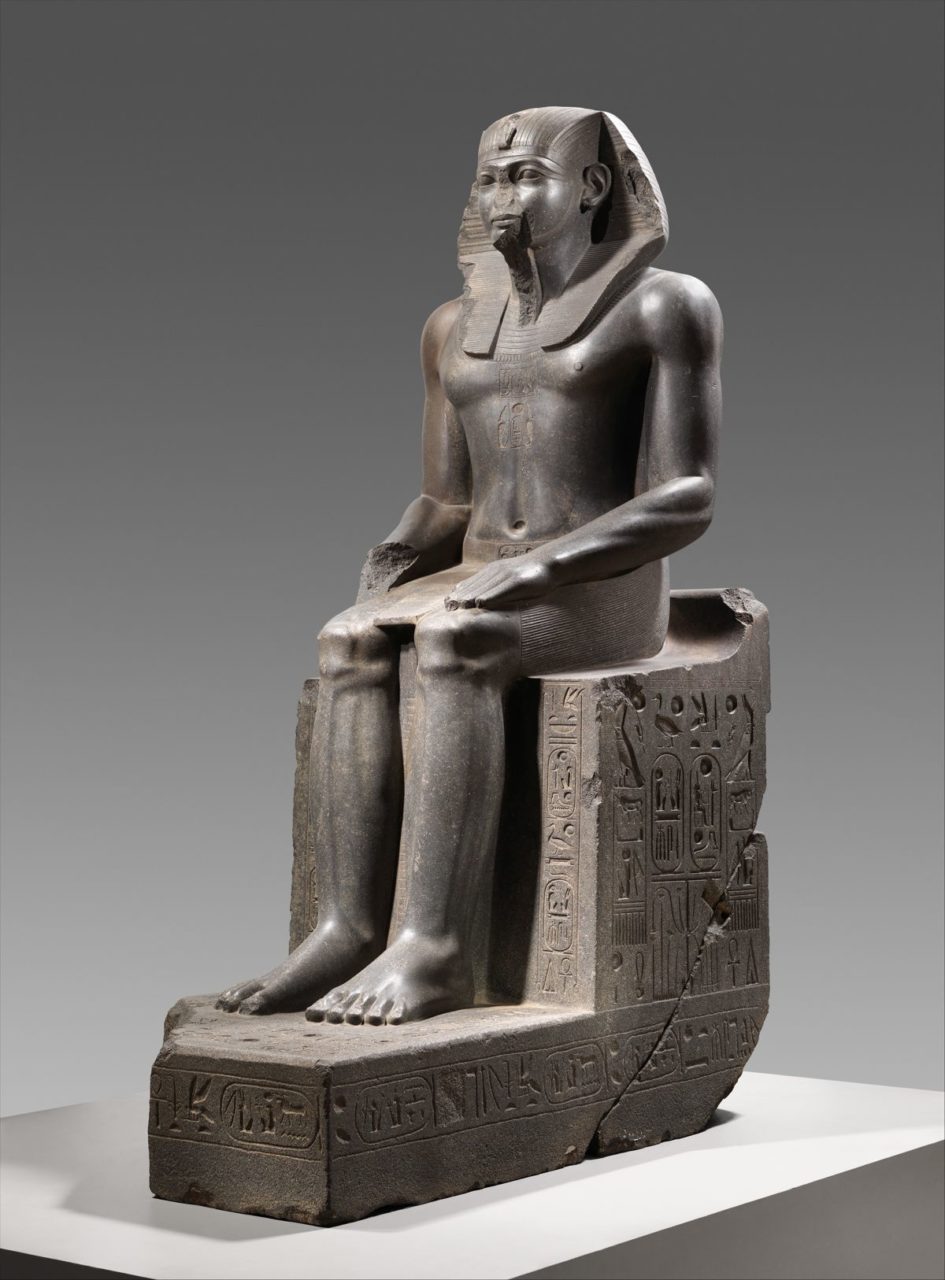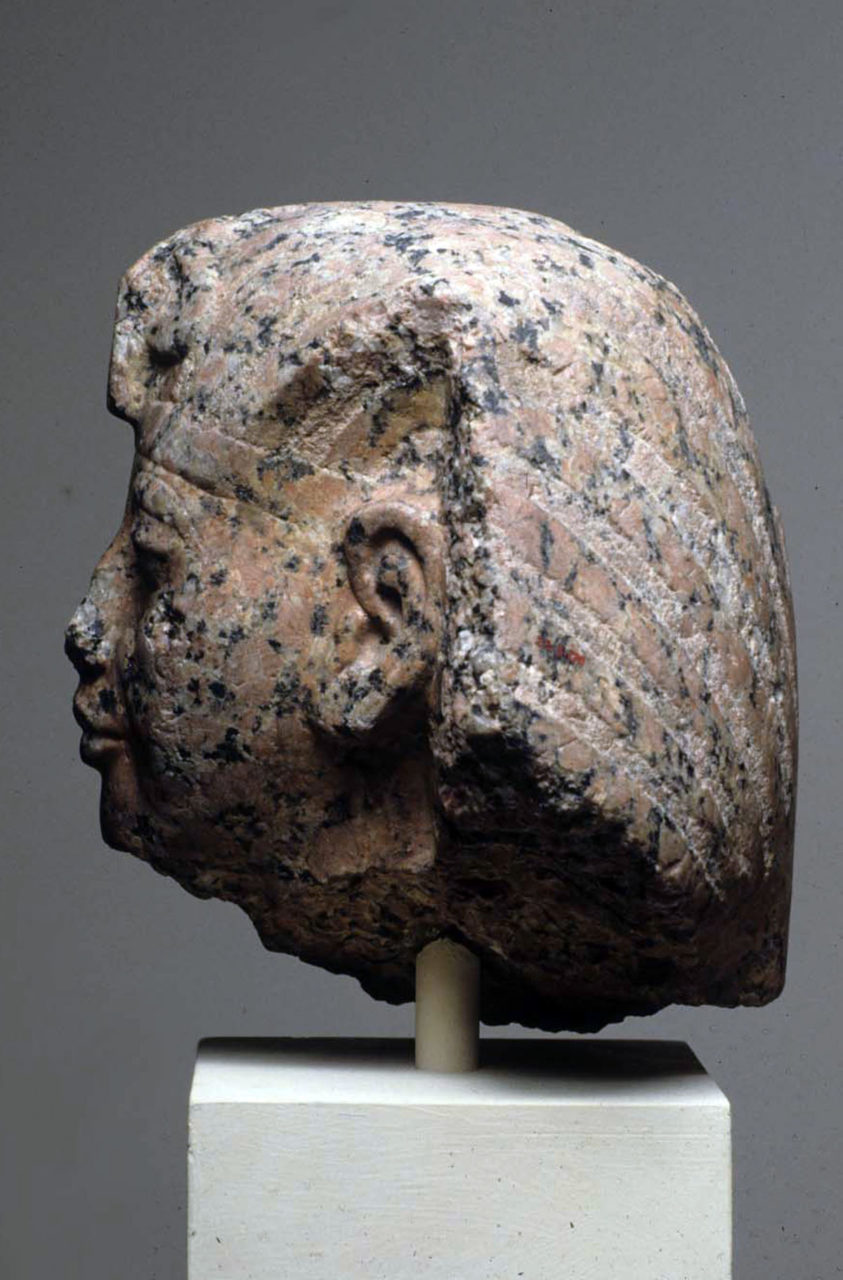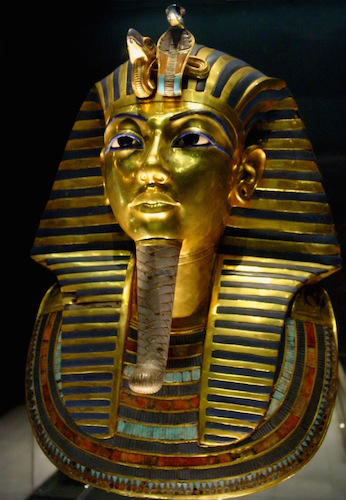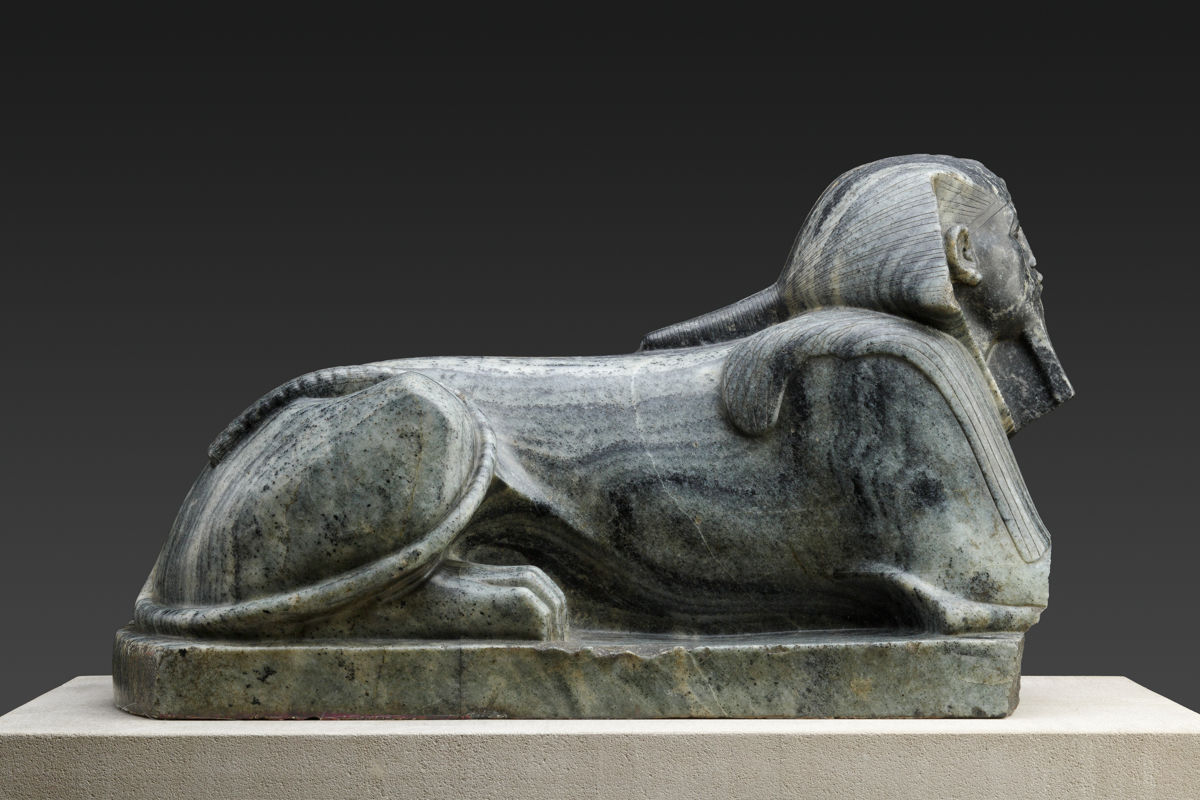Starched, striped linen headdress that draped on the shoulders and had a tail at center back worn only by royals in ancient Egypt.
The Details
Fashion, Costume, and Culture: Clothing, Headwear, Body Decorations, and Footwear Through the Ages (2013) notes that the nemes headdress was often colored brightly:
“One of the most common forms of head-dress was the nemes headcloth. This stiff linen headdress covered the head and most often had flaps that hung down the sides and over the shoulders. The nemes headcloth was often full of bright colors. It put a frame around the face and is famous as the type of headdress worn by King Tutankhamun, who ruled Egypt in the fourteenth century B.C.E. and whose gold casket was discovered in 1922 and has been displayed around the world.”
As shown in figure 1 the nemes headdress was very stiff in appearance, draped over the shoulders and worn solely by pharaohs. The nemes headdress was striped (Fig. 2) and dyed in bright colors.
Historian Daniel Delis Hill writes in The History of World Costume and Fashion (2011):
“The most common headdress featured in depictions of kings … which dates back to the Old Kingdom.To those of us who are familiar with ancient Egyptian costume through the interpretations of Hollywood wardrobe studios, this headdress is the most recognizable style. Striped or finely goffered linen was affixed to a band that fitted low across the forehead and extended around to the ears. Attached to the front of this band was the ‘uraeus’ or sacred serpent that represented the king’s divinity. At each side, the linen was cut into rounded tapers and starched into rigid flanges that hung forward onto the shoulders. The rest of the fabric was pulled into a queue at the back of the neck simulating the lion’s tail of sovereignty. Surviving renditions of the fabric include white with stripes of a single color, the occasional solid white, or a gold thread weave with goffering. One of the more famous representations of the Khat is the gold mummy mask of Tutankhamun, which has blue stripes made of inlaid lapis lazuli.” (49)
One of the most widely know depictions of the nemes headdress is shown in figure 3. Pharaoh Tut is depicted being the ruler of both Old and New Kingdom as he has the uraeus and vulture emblems at his forehead. The burial mask highlights the vivid colors of the headdress.
Phyllis Tortora and Sara Marcketti in their Survey of Historic Costume (2015) describes the physical and symbolic appearance of the headdress worn by pharaohs:
“Nemes headdress: worn by rulers from the Old to the New Kingdom; a scarf-like construction that completely covered the head, was fitted across the temple, hanging down to the shoulder behind the ears, and with a long tail at the center back symbolized a lion’s tail.” (46)
Figure 4 depicts pharaoh Senwosret III as a sphinx with a nemes headdress—from this figure, both the sphinx tail and the symbolic tail on the nemes headdress are evident.
Fig. 1 - Artist unknown (Egyptian). Colossal Seated Statue of a Pharaoh, ca. 1919–1878 B.C.. Granodiorite; 320 x 110.5 x 209 cm (10 ft. 6 x 43 1/2 x 82 5/16 in). New York: The Metropolitan Museum of Art, L.2011.42. On loan from the Staatliche Museen zu Berlin,. Source: The Met
Fig. 2 - Artist unknown (Egyptian). Amenhotep III with nemes headdress, ca. 1390–1353 B.C.. Granite; h. 26.5 x w. 21.5 x d. 21 cm (10 7/16 x 8 7/16 x 8 1/4 in). New York: The Metropolitan Museum of Art, 23.3.170. Rogers Fund, 1923. Source: The Met
Fig. 3 - Artist unknown (Egyptian). Mask of Tutankhamun, ca. 1323 BC. Gold with inlay of enamel and semiprecious stones; 54 x 39.3 x 49 cm (21 x 15.5 x 19 in). Cairo: Egyptian Museum. Source: Smart History
Fig. 4 - Artist unknown (Egyptian). Senwosret III as a Sphinx, ca. 1878–1840 B.C.. Gneiss; 73 × 29.5 × 42.5 cm (28 3/4 × 11 5/8 × 16 3/4 in). New York: The Metropolitan Museum, 17.9.2. Gift of Edward S. Harkness, 1917. Source: The Met
References:
- Hill, Daniel Delis. History of World Costume and Fashion. Upper Saddle River, NJ: Prentice Hall, 2011. http://www.worldcat.org/oclc/768100950.
- Houston, Mary G. Ancient Egyptian, Mesopotamian and Persian Costume. London: Adam & Charles Black, 1964. http://www.worldcat.org/oclc/470105472.
- Pendergast, Sara, Tom Pendergast, Drew D. Johnson, and Julie L. Carnagie, eds. Fashion, Costume, and Culture: Clothing, Headwear, Body Decorations, and Footwear Through the Ages, 2nd ed. Vol. 1: The Ancient World. 6 vols. Detroit, MI: UXL, 2013. Gale Virtual Reference Library (accessed April 5, 2019). http://libproxy.fitsuny.edu:2540/apps/pub/5VYR/GVRL?u=fitsuny&sid=GVRL.
- Tortora, Phyllis G, and Sara B Marcketti. Survey of Historic Costume. New York: Fairchild Books, an imprint of Bloomsbury Publishing Inc., 2015. http://www.worldcat.org/oclc/972500782.

